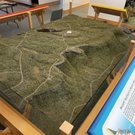We were sold on a fairy tale. Westerlo town board should enroll public support
To the Editor:
There is asbestos in the plaster walls of the Westerlo Town Hall.
Town Attorney Aline Galgay says this is a non-issue and “no big deal,” pointing out ways around the problem. I wonder if the construction work in the clerk's office involved removing or disturbing existing walls, and, if so, were asbestos containment procedures in place? Were workers, either those who did the renovation or those who used the building during that time, exposed to airborne asbestos? Were we?
Would the Board of Health agree? The Department of Environmental Conservation? What if some unsuspecting soul cuts a hole in the plaster in the future or bangs the corner of a table and breaks through the wall? What if the walls are crumbling from the inside out because of the ice dams that buckled the floors or because of roof leaks?
You know the expression “Don't look a gift horse in the mouth”?
When the building that is now the town hall was acquired, through a grant at no initial cost to taxpayers, some residents warned the community, asking about the asbestos, and about the $500,000 renovation estimate. Problems were minimized and the people were told, “We've got plenty of money.”
Many signed on to the referendum for a deal that was too good to be true. Councilman William Bichteman and Ms. Galgay trot this out over and over, as if by repetition we will forget we were sold on a fairy tale. But they turn around and say the recent referendum, denying the $2.75 million plan by a vote of more than 2 to 1, was the result of “a misunderstanding” on the part of the public.
We misunderstand nothing. The gift horse also known as Westerlo Town Hall has a belly full of problems that just keep coming.
Those in charge didn't listen then and aren't listening now. Except for one.
At the Feb. 16 Building Committee meeting, Councilwoman Amie Burnside began to read a short, well written statement that she had prepared, describing some alternatives for the committee to consider, including:
An example of what a town of similar size is planning for its town hall/justice court building. This new, energy efficient, code compliant construction has a bill of $472,000, with the town supplying the foundation. Councilman Bichteman and town Attorney Galgay didn't even allow her the courtesy of finishing her statement before jumping all over it.
Another option she brought up: Could the town park be used as an alternative building site? Or perhaps the land behind the town hall? Mr. Bichteman seems to be reserving the town hall property behind the town hall for a future firehouse.
Ms. Burnside added that she had spoken with Knox Supervisor Vas Lefkaditis, who advised her they would be willing to share services, such as justice court, and also of the potential for grants available for such an arrangement. Another loud and lengthy rebuttal from Ms. Galgay. Another knee jerk no.
Isn't this worth investigating? Is it possible the town of Berne might also be interested in such an arrangement? Or Rensselaerville? If we work together with another town, we may be able to have an independent and highly functional courtroom that is safe for the justices and the public.
Get the picture? If there is a playbook on how to kill brainstorming and the innovations and unexpected solutions that come with it, the tag team of Bichteman and Galgay, who dominated at least 75 percent of the discussion, are experts in its execution. The rest of the crew, mostly silent as usual, went along with it. Not that the courteous Ms. Burnside needs their help, however — she seems quite capable of holding her own.
The Building Committee decided to “recommend” to itself, when it plays the role of town board on March 1, the adoption of a resolution for a $100,000 Bond Anticipation Note (BAN) to fund asbestos removal. Some of that cost, $55,000, may be reimbursed by the remainder of the grant that originally funded the purchase.
But this is just the beginning. The town board wants to continue with the same $2.75 million project that was voted down. The new twist is that the board could do it with repayment over fewer years by taking out one-year BANs, as needed, and then converting them to five-year bond loans.
This is a way to avoid a public vote and possible disapproval by permissive referendum. So, if it's the same project financed by fewer payments, residents will pay more than the average $100 per $1,400 assessed value per year that was already rejected. When a resident asked the board at a previous meeting to take any such action that avoids public approval off the table, Mr. Bichteman said no.
The Altamont Enterprise editorial last week suggested adding citizens with construction or financial knowledge to the committee. I think people with no specialized knowledge should also be included. The common sense and valid questions of the public should be part of the process. Take this example, from [Synectics] “Five Ways to Kill An Idea”:
Killer #5: Regarding yourself as the authority. Pure arrogance prevents many marketers from considering ideas offered by nonexperts; however, many great ideas come from “ignorant” sources. The idea for the first Polaroid camera came not from a scientist in Edwin Land’s laboratory but rather from his 3-year-old daughter. On holiday at the Grand Canyon in 1943, she asked why she couldn’t see the picture he had just taken. His light bulb went off.
If the town board wants the best possible outcome, and support of the public, it needs to actively enroll citizen participation and put fresh eyes and minds on the problem. What they seem to want is the exact opposite, for the public to disappear, except, maybe, for the minority who agree with them.
Dianne Sefcik
Westerlo
